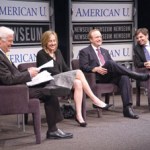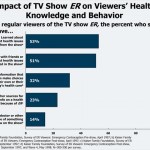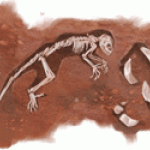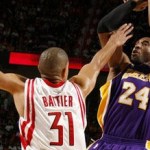
As I wrote last week, there was a lot to like about the "going broad" communication strategy of the Darwinius masillae fossil discovery published at PLoS One.
Yet, as I also noted the major caveat was that this strategy of reaching a broader and more diverse audience for science might be better applied to a scientific subject or body of research. When applied to a single study, there was a far greater likelihood of engaging in unmerited hype with the risk of diminishing public trust or at least numbing the audience to claims of "startling new discoveries."
So it is important to distinguish…
Over at the NY Times' Dot Earth blog, Andrew Revkin has launched a conversation with his readers on the challenge of navigating the many emerging arguments and claims about climate policy, with Revkin emphasizing the need to engage with a range of ideas and perspectives about what should be done. As I wrote about a few weeks back, if as a society we only engage with narrowly like-minded opinions and perspectives, we will lose the ability to build consensus and achieve effective policy actions.
Unfortunately, as Revkin alludes to, the dominant style among several prominent progressive…
Most of the world will be watching today's Champions League final between Manchester United and Barcelona, one of the most eagerly anticipated finals in recent memory. I'm picking ManU to win 3-2. Messi doesn't match up well against the bigger, tougher Premier League squads and look for Ronaldo to dazzle with at least one goal and setting up Wayne Rooney for another.
Night at Smithsonian topped the Box Office this Memorial Day weekend with a smash opening of more than $70M outpacing Terminator Salvation which scored a $43M debut.
Museum directors and science educators are sure to be looking to ride the movie's success with efforts to broaden their reach in terms of attendance and community engagement. Yet the adventure and the joy of a museum experience, captured so well in Ben Stiller's "Night at..." fantasy series, leaves open the question of what we exactly learn about science when visiting a museum and just as importantly, how we learn.
That was…
In June, I will be heading to Copenhagen to speak at and participate in the annual meeting of the Danish Science Journalists Association. The meeting titled "Framing Research" tackles many of the issues that I address in previously published and forthcoming articles, including a major article co-authored with several colleagues that is scheduled to appear around the time of the conference. [More on that in June.]
As a build up to the conference, the organizers have been conducting "person in the street" interviews on key themes. One of the main topics of the conference, as featured in this…
Hooked around the accidental release of a climate change "rebranding" memo by the firm EcoAmerica a few weeks back, Seed magazine runs today an interesting roundtable discussion on the good, the bad, and the ugly of applying framing research to communicating about climate change.
I provide comments as one of six experts "who discuss the merits of framing climate change, the language that troubles them, and the inherent bias of any chosen word." Others include climate scientists Michael Mann and Gavin Schmidt, ecologist Ann Kinzig, political scientist Clark Miller and science writer Robert…
I did an interview this morning with Elie Dolgin of The Scientist magazine discussing the "going broad" media strategy surrounding Darwinius masillae aka Ida the fossil. The magazine has the Q&A interview up on their site. The user registration is free and well worth the 2 seconds in order to access the wealth of content at the magazine's Web site.
Below are my comments. As I've noted, this week's events will serve as a long standing case study for science communication scholars and professionals to analyze and debate.
The Scientist: How unusual is this amount of media attention for a…
On Monday night, AU's [School of Communication](http://www.american.edu/soc/) sponsored a screening at the Newseum of the 1992 campaign documentary *The War Room* with a panel discussion that included stars George Stephanopoulos, Dee Dee Myers and Paul Begala. The event was part of the [Reel Journalism film series](http://www.newseum.org/events_edu/reel_journalism/) co-sponsored by the School of Communication and the Newseum. The series is hosted by Nick Clooney, veteran broadcast journalist and father of actor George Clooney. The Politico [covered the event](http://www.politico.com/news/…
So I scanned the reviews for director McG's Terminator Salvation at the Washington Post, New York Times, and New York Magazine, and it turns out not unexpectedly that in the words of my hometown Buffalo News' critic Jeff Simon that the film "is a remarkable looking piece of work. And you'll find gobs and gobs of action in it at least half of the time. Bullets fly, so do people. Things blow up and, yes the people do, too."
But reading the reviews left me thinking: There's so much visual, so much wider audience engagement with a film like Terminator Salvation, that the underlying themes of…
Over at the NY Times' Opinionator blog, they provide a round up of commentary from science bloggers on Darwinius masillae aka Ida while also pointing to a revealing outing at the conservative blog Little Green Footballs on where Rush Limbaugh stands on evolution.
The publicity success of Darwinius masillae aka Ida continues on with Tuesday's New York Times story among the most blogged at the paper. The top 10 list as of this afternoon:
# Overhaul Likely for Credit Cards
# U.S. to Offer New Mileage and Emission Standards
# Thriving Norway Offers a Lesson in Frugality
# Obama to Offer Plan to Regulate Derivatives
# Seeking a Missing Link, and a Mass Audience
# U.S. Retail Sales Fall for a Second Month
# Food Companies Try, but Can't Guarantee Safety
# G.M. Dealers Wait to Learn Their Fate
# New Starbucks Ads Seek to Recruit Online Fans
# The Times and…
In June, I am headed to Denmark to speak at and participate in a unique conference organized by the Danish Association of Science Journalists. The one day conference titled "Dissensus 2009: Framing Research" examines the nature and implications of framing for science journalism and public engagement.
As part of the build up for the conference, organizers have been heading out into the parks, coffee shops and streets of Copenhagen to interview Danes about science. In the latest video, Danes are asked their views on evolution and their belief in possible alternatives.
As we discuss in a current working paper, the "going broad" strategy of using entertainment media to reach wider audiences was first pioneered in the area of health.
For example, working in collaboration with experts, screenwriters for the series ER purposely inserted plot scenarios intended to raise attention to beneficial health behaviors. Evaluation of the efforts found important impacts in raising awareness, discussion, and interest in the featured health topic among viewers. More recently, a special issue of the American Journal of Bioethics evaluated the use of programs such as House…
Talk about "going broad" with a science communication strategy: If an open access journal article, a front page NY Times article, Good Morning America, and a two-hour History Channel documentary weren't enough, the "missing link" known as Ida now appears as today's logo at Google's search engine.
In the academic and professional fields of science communication, the story of Ida will be analyzed and debated for some time. At one level, as I explained yesterday, the innovative strategy and resources spent on popularizing this finding to a broader audience is exactly the type of method needed…
It started this morning with the front page story at the NY Times. Tellingly, the article wasn't hooked around Darwinius masillae as a historic scientific breakthrough but rather as a novel ramping up in communication strategy for science. Now across the blogosphere, the tag of hype has caught on to Darwinius masillae, just notice these google results.
It's difficult to find fault with the criticism given that the architects of the media blitz are using trigger words like "missing link," "the eighth wonder of the world," and "an asteroid falling down to Earth" in the world of Paleontology.…
Speaking of "going broad" with science communication, here's something I really like. As part of their Science and Entertainment Exchange initiative, the National Academies has launched The X-Change Files blog with author Jennifer Ouellette, producers Janet & Jerry Zucker, physicist Lawrence Krauss, CSI screenwriter Matt Partney, and physicist Sidney Perkowitz as contributors.
I write about the Science & Entertainment Exchange initiative in several forthcoming articles and spotlight it in talks on the road, so I look forward to following the blog!
For readers in the Madison area, I will be giving a lecture on Thursday, June 25 at the University of Wisconsin as part of the university's summer lecture series. The lecture is free to the public and takes place in 1100 Grainger Hall from 7-9pm.
The series focus this year is on the intersection of science, public communication, and politics, with a number of top scholars in the field slated to speak across the summer. Below is a description of my talk, representing many of the themes discussed at this blog, in forthcoming articles and book chapters, or in current projects.
What's Next for…
Fronting the NY Times today is a preview of a bold new strategy for engaging hard to reach audiences on science. As the NY Times describes, today's media event that unveils the fossilized remains of the monkey like creature Darwinius masillae features a unique collaboration between the History Channel, the open-access journal PLoS One, and the American Museum of Natural History.
Along with today's publication at PLoS and the media unveiling at AMNH, there will be a two hour documentary on Monday at the History Channel, an exclusive arrangement with ABC News to appear on Good Morning America…
Angels & Demons opened this weekend with a less than expected $48 million just edging out the still hot Star Trek ($43M, $150M over two weeks). I took in the film at a 3/4 filled theater in Georgetown.
Angels is worth seeing and a better film version than Davinci Code. The film is also likely to spark conversations among movie-goers on the relationship between science and religion, a theme that is heavy throughout the film and the novel.
Without spoiling the plot, Angels features a Pope inspired by science and who views research on the so-called "God Particle" as a means for engaging the…
So I am sitting here watching game 7 of the Lakers-Rockets series with the Lakers up by 20. The fact that the Rockets could take the Lakers to 7 games minus their best two players is just short of miraculous...until you consider a New York Times magazine article that appeared earlier this year. The article spotlights the Rockets and their cerebral swingman Shane Battier, who have invested in a sophisticated use of statistics and quantitative analysis to plot pre-game strategy and to defuse superstars such as Kobe Bryant. It's worth reading.




